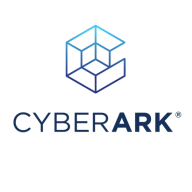

CyberArk Endpoint Privilege Manager and Check Point Application Control compete in endpoint management, each excelling in specific areas. Check Point has the upper hand due to higher user reviews for its application control capabilities.
Features: CyberArk Endpoint Privilege Manager handles lifecycle management, password resets, and application whitelisting. It integrates well with various systems. Check Point boasts a vast database and offers granular control, automatic updates, and policy definitions based on user roles.
Room for Improvement: CyberArk users express a need for better performance, faster support response, and enhanced feature synchronization. Limitations in integration with PAM tools and user interface are noted. Check Point faces issues with premium pricing, occasional database misclassification, and calls for better policy management.
Ease of Deployment and Customer Service: CyberArk offers hybrid and on-premises options but is critiqued for complex setup and slow support. Certification is often needed for higher assistance levels. Check Point offers cloud and on-premises solutions with praised technical support and a helpful user community.
Pricing and ROI: CyberArk's pricing targets large enterprises, providing a solid ROI through minimized security breaches. Check Point, while also expensive, justifies its cost with comprehensive protection. Both solutions focus on reducing vulnerabilities and downtime for robust returns.
Before granular application control, IT support saw 5 to 7 tickets per week related to blocked apps or network slowdown. After implementing rule-based access and bandwidth prioritization, that dropped to 1-2 tickets per month, saving 6 to 8 hours per month for our team.
I have seen a return on investment, noting that after using Check Point Application Control blade, we minimized our bandwidth usage by half and also observed improved productivity, so we get what we invested in.
I have seen a return on investment since Check Point Application Control reduces my time spent searching for what applications users are accessing.
Deploying CyberArk Endpoint Privilege Manager has secured the infrastructure, which saves money, time, and resources.
I consider CyberArk Endpoint Privilege Manager's return on investment to be good since it effectively accomplishes the goals expected from privilege access management solutions.
The support was very good, with representatives who were skilled in resolving issues.
When I create a case, I receive responses and solutions quickly.
We receive timely responses from Check Point if any network issues arise related to software blades.
They respond immediately to our inquiries, resolve issues promptly, and provide valuable guidance, especially in critical situations.
We engage them when needed and receive prompt responses that typically resolve our issues.
Earlier, we received support for normal tickets within a day, but now it takes one or two days to resolve issues.
It is very useful in an organization to limit bandwidth usage.
It's very scalable and has shown substantial improvement, making it a trusted solution.
Check Point Application Control's scalability allows us to handle growth very easily and in a straightforward manner.
We can set permissions per team or department, allowing some teams to elevate specific applications while others have different permissions.
CyberArk Endpoint Privilege Manager is quite scalable.
The available reports and other security tools assist in scaling it according to my organization's needs.
Check Point Application Control is stable for my needs; there are no downtime or reliability issues.
Check Point Application Control is stable, being more stable than other solutions due to its simplified GUI and policy management, making it the first choice for many customers.
Check Point Application Control is very stable; I haven't encountered any special issues.
It is a robust solution that has effectively supported our environment without major issues.
Since implementing it, we have not experienced any outages or stability issues.
CyberArk Endpoint Privilege Manager offers multiple options for creating and stopping policies.
Check Point can do a deep dive to understand how they can improve the performance while we enable the application control feature on all the policies.
There are many complications while using the smart console, making it very difficult to configure a VPN, such as a route-based VPN for someone transitioning from other technologies to Check Point.
If an unusual app suddenly spikes bandwidth or starts behaving suspiciously, the system should automatically suggest a policy adjustment instead of waiting for the admin to dig into logs.
CyberArk Endpoint Privilege Manager could be improved by simplifying the administration process, specifically when setting up policies and applications.
Currently, no user-based policy option is available inside the EPM console.
Some features provided in the self-hosted version of EPM are not supported in the software as a service version, like connection to some analysis applied by Palo Alto.
That's why it's costly.
My experience with pricing, setup costs, and licensing for Check Point Application Control has been that they are very affordable for customers.
It is not on the higher side, so the experience has been fair.
CyberArk Endpoint Privilege Manager is slightly expensive, but costs can be negotiated to become more competitive.
CyberArk Endpoint Privilege Manager is costly compared to other solutions.
I've received feedback that the pricing is high, however, for me, the value it brings is worth the cost.
The next-gen application visibility and cloud sync features are valuable for us because they allow us to provide granular controls over the traffic that is flowing in and out.
We are using 4 Mbps of bandwidth, and by using Check Point Application Control, previously it was 3 Mbps, so now it is around 2 Mbps, allowing half of the bandwidth to be utilized for other work and minimizing the usage of bandwidth.
The best features of Check Point Application Control are granular application and web control, user and group awareness, identity awareness, integration, SSL/TLS inspection, detailed visibility and reporting, and bandwidth management.
CyberArk Endpoint Privilege Manager effectively reduces malicious content in applications by allowing us to identify and block dangerous applications.
It allows them to granularly manage controls to prevent some malicious activities on the endpoint machine.
CyberArk Endpoint Privilege Manager enhances computer security by providing minimal access, effectively preventing ransomware attacks.
| Product | Market Share (%) |
|---|---|
| Check Point Application Control | 5.2% |
| CyberArk Endpoint Privilege Manager | 5.2% |
| Other | 89.6% |


| Company Size | Count |
|---|---|
| Small Business | 18 |
| Midsize Enterprise | 24 |
| Large Enterprise | 18 |
| Company Size | Count |
|---|---|
| Small Business | 17 |
| Midsize Enterprise | 9 |
| Large Enterprise | 18 |
CyberArk Endpoint Privilege Manager, a critical and foundational endpoint control addresses the underlying weaknesses of endpoint defenses against a privileged attacker and helps enterprises defend against these attacks through removing local admin rights, enforcing least privilege, and implementing foundational endpoint security controls across all Windows, macOS and Linux endpoints from hybrid to cloud environments.
Click here for a free 30 day trial: CyberArk Endpoint Privilege Manager free trial
We monitor all Application Control reviews to prevent fraudulent reviews and keep review quality high. We do not post reviews by company employees or direct competitors. We validate each review for authenticity via cross-reference with LinkedIn, and personal follow-up with the reviewer when necessary.